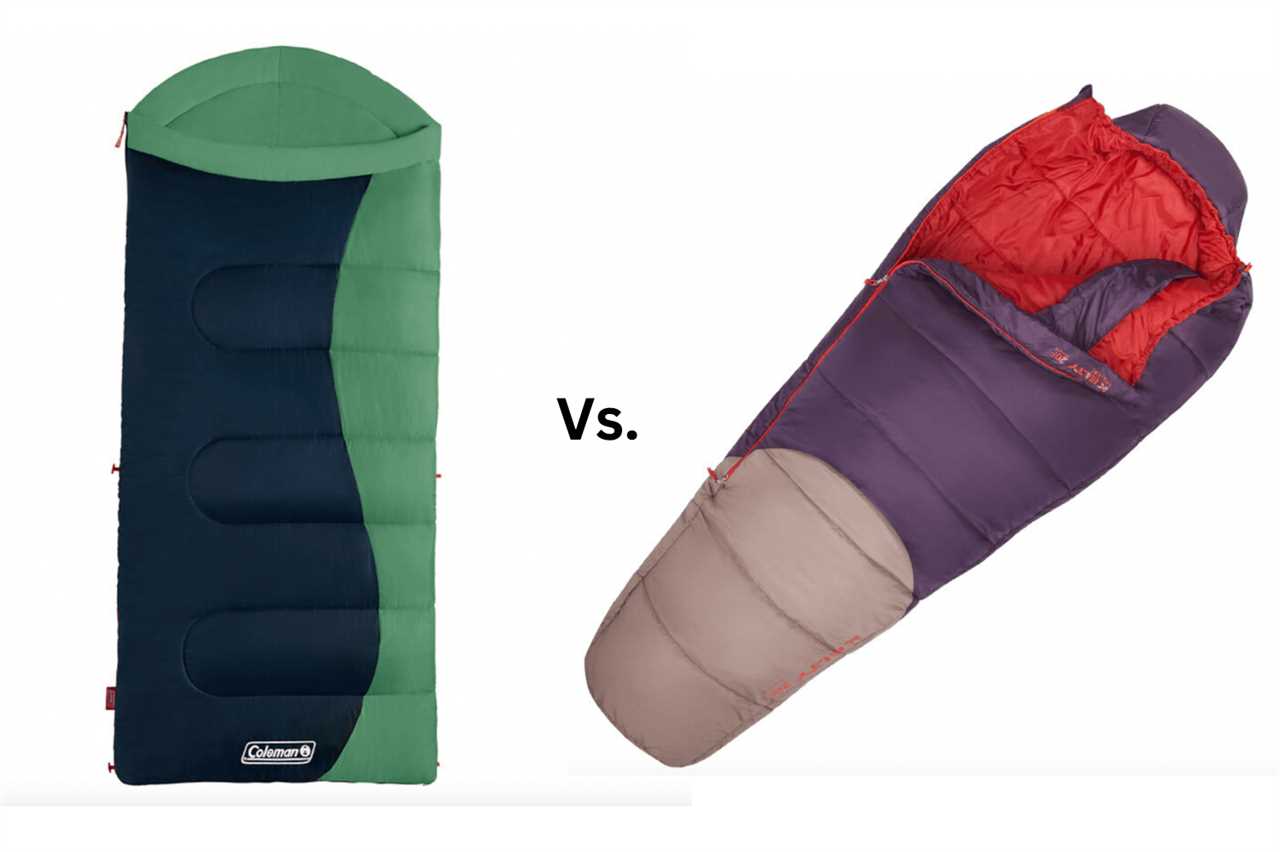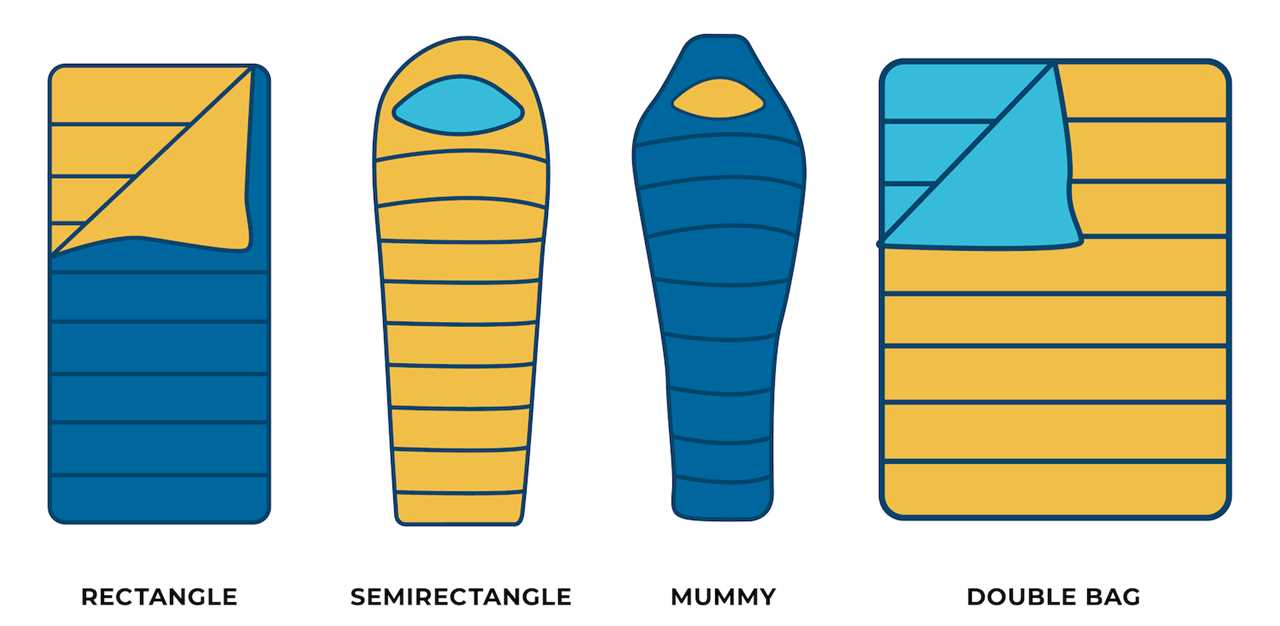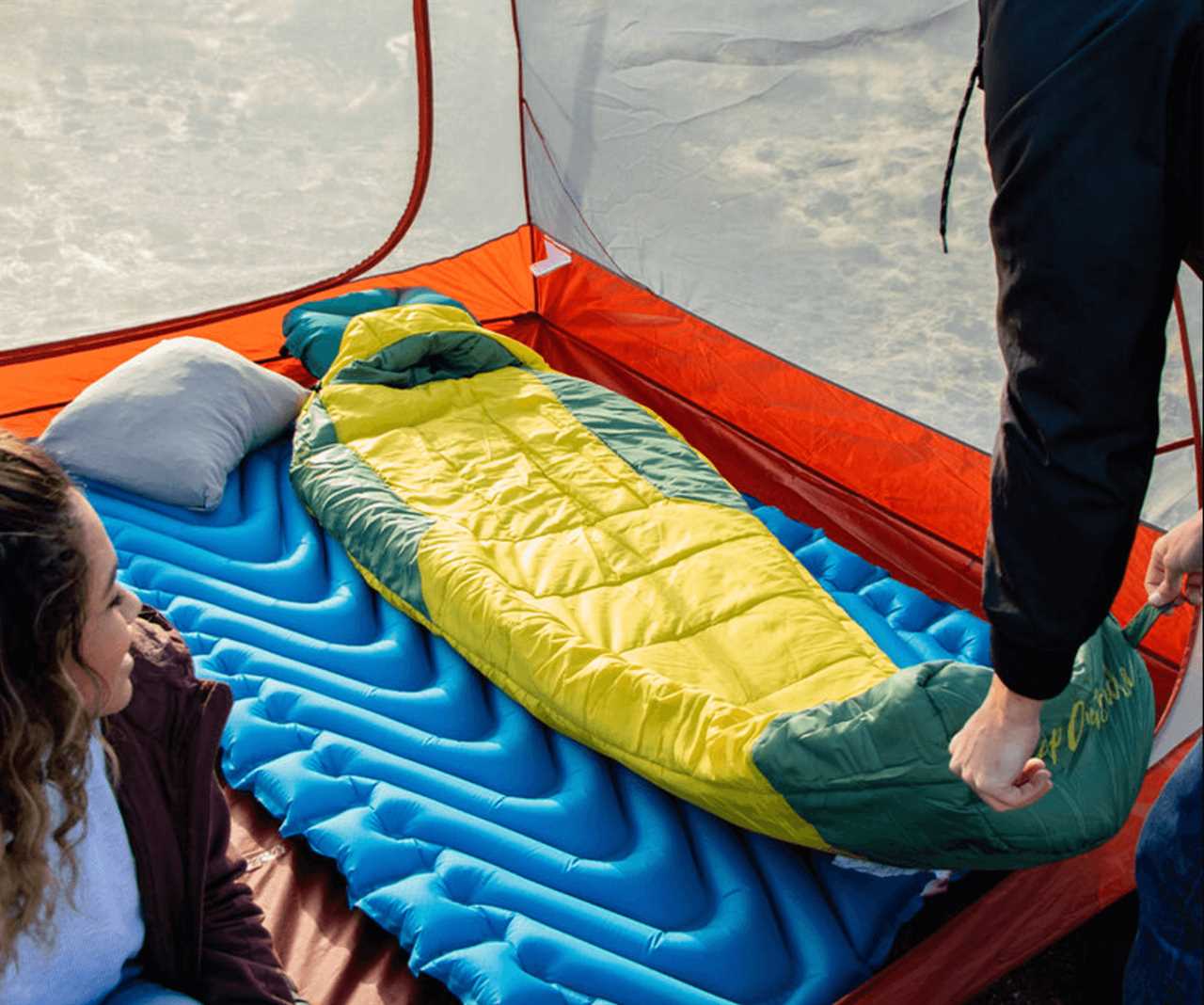Your sleeping bag choice matters when you go camping. A comfortable bag for summer can leave you shivering when temperatures drop in the fall, but a winter sleeping bag can make you sweat during the warmer months.
Some RVers stock sleeping bags for hosting guests inside their RV, while others use them to make tent camping comfortable for guests or their kids. Even if you’re a car camper or just renting an RV, you need to know how to choose a sleeping bag for any season.
So, here are some tips for choosing the best one for your needs!
Types of Sleeping Bags

Photo by Camping World
There are two distinct types of sleeping bags: those for RV or car camping and those for backpacking. Sleeping bags for RV or car camping are roomier, but they don’t pack up as well as backpacking sleeping bags.
Sleeping bags for backpacking are light and compact, making them easy to carry and easier to get back into a compact stuff sack when storing. Their downside is that they can be very snug when you climb inside.
A roomier sleeping bag is preferred for sleeping in most RVs or making tent camping more comfortable.
But if you want a sleeping bag that can be used in your RV or for backpacking trips, pick a lighter and more snug design.
Sleeping Bag Shapes

Photo by Camping World
You’ll also find sleeping bags in four main shapes: rectangular, semi-rectangular, mummy, and double bags. Here’s a quick breakdown of these shapes:
- Rectangular bags offer the most room inside, allowing you to sleep in multiple positions and stretch out if needed. Many can also be fully unzipped and used as a blanket or comforter.
- Semi-rectangular bags are also sometimes labeled ‘barrel’ or ‘modified mummy’ bags. They offer a nice balance between comfort and warmth.
- Mummy bags are the snuggest fit and don’t allow much movement inside the bag. If you roll over, the bag rolls with you, but the advantages of a snug fit are added warmth and reduced bag weight.
- Double sleeping bags offer enough space for two people, making them ideal for couples camping together or snuggling with a pup.
Sleeping Bag Insulation

Photo by Camping World
The two main types of sleeping bag insulation are down and synthetic. There are advantages to both types:
| Synthetic Insulation |
Down Insulation |
| Affordable |
Lightweight and durable |
| Insulates better when wet |
Compresses for compact packing |
| Non-allergenic |
Performs well in cold, dry weather |
| Dries quickly |
Retains loft and warmth longer |
Although down insulation gets a bad reputation for underperforming when wet, many manufacturers finish their down sleeping bags with some type of water repellent treatment to add protection and water resistance when you’re camping in wet conditions.
If you’re primarily using your sleeping bag inside your RV or in a tent for summer camping, you’ll save a little money by choosing a bag with synthetic fill.
But if you need something that provides added warmth and durability for extending your camping season into the early spring or late fall (shoulder seasons) a down sleeping bag is a better choice.
Sleeping Bag Temperature Ratings

Photo by Camping World
Understanding temperature ratings is key to choosing the right bag for any season. But temperature ratings can be tricky because they aren’t 100% accurate; it’s just not possible. Many bags also have a comfort rating and a limit rating.
- Comfort rating is the ideal temperature range recommended for that sleeping bag.
- Limit rating is the lowest recommended temperature for the sleeping bag.
In addition to comfort and limit ratings, there are three broad categories that most bags fall into; bags designed for summer, winter, and three-season use.
- Summer sleeping bags are typically rated for more than 30℉.
- Winter sleeping bags are usually rated for less than 15℉.
- Three-season bags are rated for 15 to 30℉.
When comparing sleeping bags based on temperature rating, remember that it’s generally easier to cool down by unzipping than it is to warm up. If you’re on the fence, choosing a bag that’s rated for the lowest temperature you’ll encounter is a smart bet.
Also, other factors impact the overall warmth of your sleep system. Those factors include the design of your sleeping pad, your overnight clothing choices, outside humidity and wind, your metabolism, and more.
Additional Tips for Choosing a Sleeping Bag for Any Season

Photo by Camping World
Before you finalize your selection, consider these additional tips:
What’s the best temperature rating for a year-round sleeping bag?
Generally, a warm sleeping bag rated for temperatures down to 20 degrees Fahrenheit will provide comfort throughout most of the year. You can unzip it further when warm and poke a leg out to cool down. In cold weather, you can use a sleeping bag liner or wear extra layers to stay warm. But if you plan on winter camping, you’ll likely need something with a lower temperature rating.
How long should my sleeping bag be?
Most manufacturers make regular and long versions of their sleeping bags. Look at the length of both versions and compare them to your height. When you’re lying in your bag, your feet should not be pushing up against the foot box. Otherwise, they’re going to get cold.
What is the best insulation for sleeping bags?
The truth is that there are pros and cons to synthetic and down insulation. Keeping a down bag dry is not as difficult as some might suggest, which somewhat discredits the argument that synthetic insulation is better when it gets wet.
However, there are environmental considerations that sway some towards synthetic bags too. If you do choose a down design, look for a company that sources their down ethically. Bags from responsible manufacturers will usually be labeled as RDS (Responsible Down Standard) or TDS (Global Traceable Down Standard).
Shop Camping World’s selection of sleeping bags.
How do I find a sleeping pad that works with my sleeping bag?
A sleeping pad provides an important layer of insulation between you, your bag, and the ground. Your body actually loses more heat to the ground than it does to the air (conduction versus convection, for all you science folks!).
This is especially true if you’re sleeping in a tent, and a quality sleeping pad is the best way to minimize heat loss to the ground. R-value is a measure of the warmth of a sleeping pad. A sleeping pad with an R-value of 3 is generally solid for most of the year, but you also want a pad that you won’t slide off every time you move throughout the night.
Along with your sleeping bag choice, learning how to choose the right camping tent will help you enjoy restful nights in the outdoors. Or, if you’ll be sleeping inside your RV, you might enjoy these RV bedroom accessories for better sleep!
Do you have any questions about choosing sleeping bags for any season? Let us know in the comments below!
By: Tucker Ballister
Title: How To Choose a Sleeping Bag for Any Season
Sourced From: blog.campingworld.com/at-the-campsite/how-to-choose-a-sleeping-bag-for-any-season/
Published Date: Fri, 30 Sep 2022 14:00:08 +0000
---------------------------------------------
Did you miss our previous article...
https://outdoorsnewswire.com/camping/excellent-pop-up-campers-for-first-timers
 CampingSurvivalistHuntingFishingExploringHikingPrivacy PolicyTerms And Conditions
CampingSurvivalistHuntingFishingExploringHikingPrivacy PolicyTerms And Conditions
